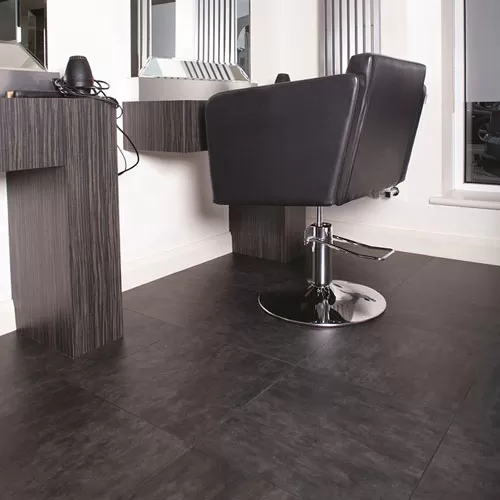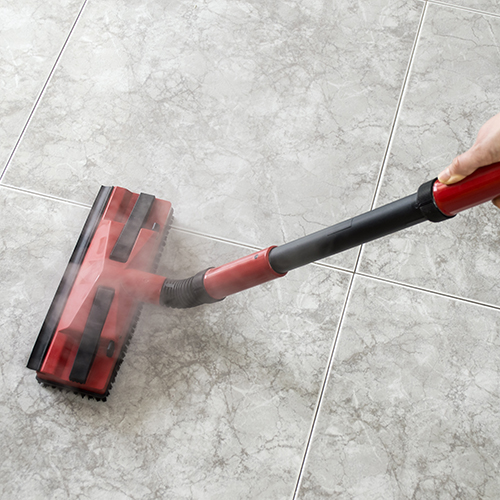Can You Steam Mop Vinyl Flooring?
Related Product: Max Tile Raised Floor Tile 5/8 Inch x 1x1 Ft.
Steam mops offer many advantages, but when it comes to cleaning vinyl flooring, they aren’t the best choice.
Can You Use a Steam Mop on Vinyl Flooring?
To understand why a steam mop isn’t a great idea for vinyl flooring, you’ll need to understand how vinyl flooring is constructed.Vinyl plank, tile, and roll flooring usually consists of multiple layers. The top layer, called a wear layer, helps to protect the flooring from scratches and general wear and tear.
The second layer is a printed layer with the flooring’s finish. This is the layer that gives the flooring its realistic look, whether it’s designed to resemble a type of wood, stone, or other material.
The third layer is made up of a vinyl core that’s resistant to water. This layer makes up for most of the flooring’s thickness.
The last layer is the backing. This is the layer that you attach to your subfloor.
Luxury vinyl flooring is available with multiple installation methods. The glue-down method is more labor-intensive, but it’s long-lasting.

Some tiles feature a peel-and-stick backing that simplifies the installation. If you opt for a modular tile, you can install and remove the flooring as needed.
When it comes to cleaning your vinyl flooring, a steam mop can be appealing. The mops quickly kill germs and are easy to use.
But they’re not safe to use on your vinyl flooring for multiple reasons. The first is the heat they generate.
Since steam mops heat water to more than 200 degrees Fahrenheit, that steam can work its way through the tile and potentially damage the interior.
The amount of water that steam mops use can also damage your vinyl flooring. Water can potentially work its way into and between your tiles, damaging the material and even contributing to mildew growth.
The Best Way to Clean Your Vinyl Flooring
To best maintain your vinyl flooring, it’s important to clean it frequently. Promptly removing dirt and debris can help to prevent it from scratching and damaging your floors.You can accomplish this by sweeping or vacuuming your floors regularly; a daily cleaning is ideal, especially for spaces that see significant traffic. You can also use a microfiber mop pad for quick cleanups.
If any substances, like liquids, are spilled on your floor, clean them up immediately. It’s important to address spills promptly to prevent them from staining or damaging your floors.

Give your floors a deep cleaning weekly using a wet mop. Avoid any harsh cleaners that could damage your floor, and instead use a neutral pH cleaner.
When wet mopping your floor, use a minimal amount of liquid and wring the mop out thoroughly. Soak up as much liquid as possible, and consider drying your floors with a towel to minimize the amount of moisture that they’re exposed to.
While these general recommendations will work for most products, don’t forget to check the cleaning instructions that come with your specific flooring product. Following those instructions can help ensure that your flooring stays in the best condition and that you don’t accidentally void any manufacturer’s warranties.
Additional Tips for Protecting Your Floors
Thorough and frequent cleaning will go a long way toward keeping your floors looking their best, but there are additional ways to prolong your floor’s life, too.Consider asking everyone to remove their shoes in your mudroom, which will reduce the amount of dirt and debris that’s tracked into your home. The lack of shoe traffic can also help to prevent your floors from being scuffed or scratched, particularly by high heels.
Make sure that all of your furniture is equipped with protective pads and feet. Felt pads can help to prevent furniture from scuffing your floors.
When you do need to move furniture or rearrange, get people to help you lift big pieces, rather than sliding them across your floor.
Be sure that you install flooring according to the manufacturer’s instructions, and choose flooring products that are suitable for how they’ll be used. If you’re installing the flooring in a commercial setting, then you’ll need to invest in commercially rated products that can withstand the significant use that they’ll see in these settings.

If you’re worried about potential damage to your flooring, then you may want to select a product that allows you to easily replace sections. When you’re working with modular tiles, you can easily replace any of the tiles that become stained or damaged.
This option can save you the time and expense of having to replace a larger section of your flooring. It makes it easy to keep your flooring in good condition, especially when you pair it with good cleaning and maintenance habits.
